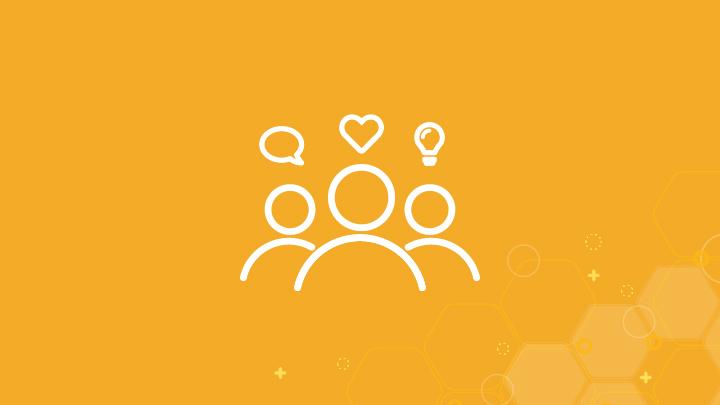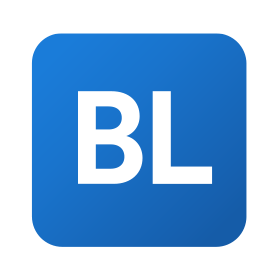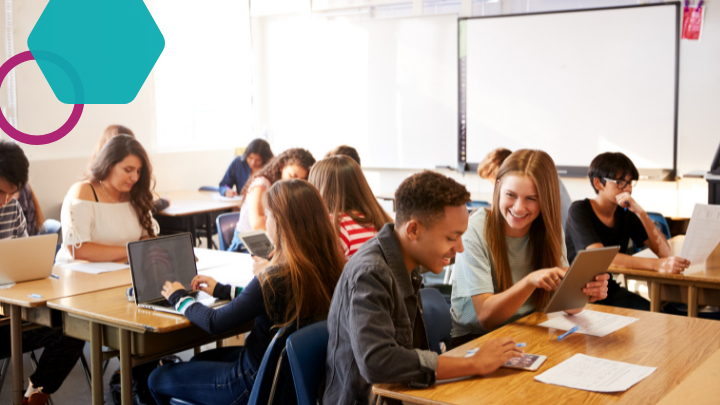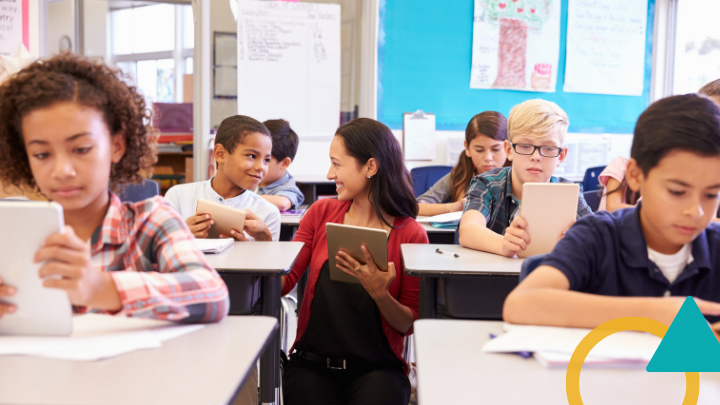There is nothing like the possibility of a new school year. One of my favorite parts of teaching was the ability to begin again each September. No matter how many years of teaching you have under your belt, for me, every year felt like the first year. The students are new. The curriculum and tools are evolving. You aren’t who you were the year before. You know more than you did last year, but there is still so much to learn. So where to begin? If you are looking for some new ideas for how to kick off this school year, we have rounded up BetterLesson coaches’ favorite back to school strategies. We hope that they feel like a brand new notebook for the month of September–full of possibilities as we begin again.
Julie Mason, BetterLesson Instructional Coach
Six-Word Memoirs
As an English teacher, it felt important for me to write with my students on the first day of school. Prior to class I filled jars with strips of paper. Those papers contained different words and phrases. I shared some examples of six-word memoirs from the book I Can’t Keep My Own Secrets by Rachel Fershleiser. I then shared a six-word memoir I wrote with the class. I gave students the task of writing their own six-word memoir that would give a sense of who they are and what matters to them. Students who weren’t sure how to start were able to use the words and phrases in the jar for inspiration. I saved the students’ writing, and later in the year we returned to their six-word memoirs and they revised them. We then wrote an essay about how they had changed and grown that year. If you want to learn more about the six-word memoir, check out this Master Teacher Lesson by Simone Larson.
Daniel Guerrero, BetterLesson Instructional Coach
Class Values Ratings
When a new school year starts, I often think about ways that I can build a strong culture and clear understanding of expectations in those first few weeks. However, class culture is best nurtured all year, and is most effective when it is authentic and relevant to learners. Building a list of values that will guide you and your students’ mindsets and actions all year is a great exercise to plot your vision for teaching and learning. It also creates a framework for learners to connect the dots from actions to these key mindsets. You can run team building exercises to teach these values at the beginning of the year. In Class Ratings, we would rate our values at the end of each day, solidifying our understanding of how these manifested. This daily ritual allows us to see the value of our day, and the promise of growth for the next one.
Chris DeWald, BetterLesson Instructional Coach
Student Contracts in Group Work
I love the way that this strategy plays a dual role of providing structure for collaboration that includes ownership, AND supporting students to develop their own understanding of their strengths and weaknesses. Using this strategy consistently throughout the year give students such an opportunity to grow in meaningful ways.
Cheryl Belknap, BetterLesson Instructional Coach
Letter to Myself
This is one of those strategies that works throughout a school year. You don’t have to use it at the start of the year in order to use it at the end, or vice versa. But it is particularly great if you do use it both at the start and at the end.
Students write a letter to their “future selves” at the start of the year, to be read at the end. This letter should be student-centered, but because it is generally an unusual request to make of students, it helps to model it. I wrote a blog about this strategy at the end of this past school year, because as I mentioned earlier, it works well then too. It is a highly flexible strategy, with many different iterations and it works for pretty much every grade and all of that is covered in the blog which also includes resources and ideas. My suggestion for teachers who use this letter is to remember that they too are part of this community, and should also be writing a letter to their future selves.
Circle Up
Classroom Circles is one of those strategies teachers of upper grades leave behind. I know from my experience that it a strategy that is even more critical for older students. A circle creates a place where every student is seen and is equal. Every student will be acknowledged. They will hear their name spoken in a positive way. The Classroom Circle is a place to create tolerance, bring voice to students, and provide safety when fear is present. The major concern most teachers have is the time commitment, and I can’t argue with that. Teachers are always in a time squeeze. But I believe the time spent at the start of the year creating and nurturing a community circle pays back in time throughout the year that isn’t lost to student emotion, conflict, and when crisis occurs.
Afrika Afeni Mills, BetterLesson Instructional Coach
I Wish My Teacher Knew
The I Wish My Teacher Knew strategy is a resource containing the tools teachers need to build a strong foundation for the classroom. It supports teachers to connect with their students on a personal level. When students feel known by their teachers, they are more likely to feel authentically connected to the learning community. Ideally, this strategy would be used in the beginning, middle and end of the school year to begin and maintain a meaningful connection with students.
Laura Cruz, BetterLesson Instructional Coach
Thresholding to Greet Students at the Door
Relationships are at the core of teaching and the faster I can connect student names to student faces, the sooner my students feel safe and comfortable in the classroom. In the first week of school, I always made a concerted effort to be at the door to greet students. Besides helping me to memorize names, it also allowed me to be my full self for a moment and to ensure students felt recognized as individuals. As I got to know students better, I could give compliments for academic or personal accomplishments, ask about an emotional state when students seemed ‘off’ and preview the class agenda for students who needed an extra hand managing their expectations for class. Investing in these small moments gave us all greater gains throughout the school year.
Kelly Kennefick, BetterLesson Instructional Coach
Interest Surveys
When a new year begins, I am eager to meet my new group of students and learn about them. Every year, I use an interest survey in order to gain information about my students’ hobbies, how they feel they learn best, their most memorable moments in school, and other questions that help me learn about them as individuals and learners. Having taught upper elementary school, I also sent a survey home to parents to help gain additional information about how their child learns and how I can best support them. This approach provided me with an opportunity to gather data about the interests in my class, their perceptions of school, activities or subjects that have been exciting, and activities or subjects that have been challenging. Interest surveys, when used properly, can serve as a foundation for launching a strong culture in the classroom. It is imperative to utilize the data from these surveys. Suggest books based on interests, include projects involving students’ interest, think about how students learn best or think they learn best and support them in those ways.
Jessi Anderson, BetterLesson Instructional Coach
Personalizing Learning With Genius Hour
Although Genius Hour can be a big undertaking, it’s the perfect strategy to start at the beginning of the school year. At its core, Genius Hour encourages a classroom shift from a teacher-centered classroom to a student-centered classroom. The focus of this project is on students’ interests and voice, all while taking into account the importance of choice in the learning process. Genius Hour projects can be as small as a unit or as large as a quarter, semester or year-long project. In the end, the size of the project is based on what and how many skills you’re assessing, and how personalized you want the project to be for students. If that’s not enough for you, you might consider Genius Hour as an outlet for authenticating learning for your students by connecting with mentors outside the school, blogging, or connect with a class also participating in Genius Hour. This project is only limited by your students and your imagination!








